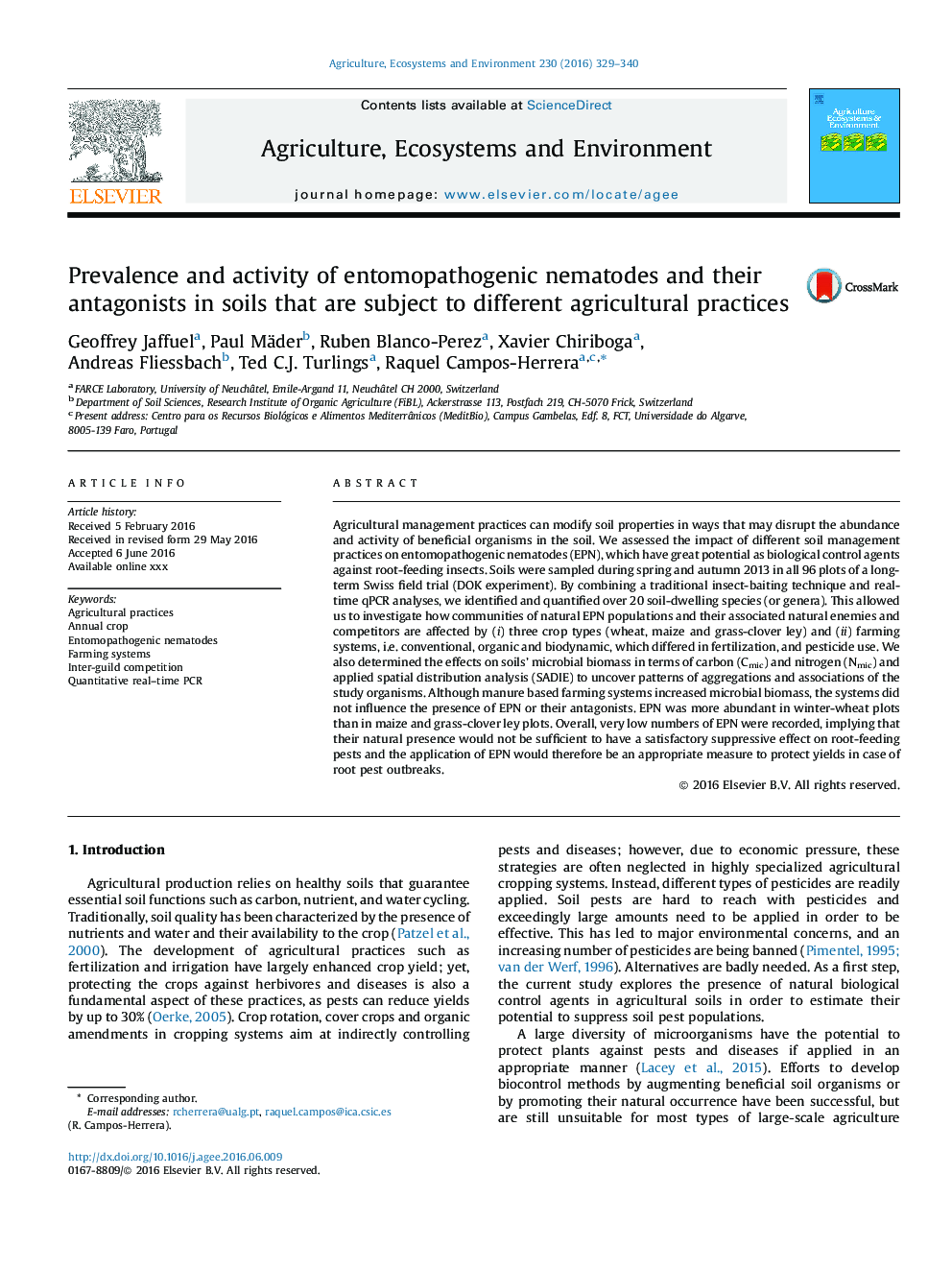| Article ID | Journal | Published Year | Pages | File Type |
|---|---|---|---|---|
| 8487403 | Agriculture, Ecosystems & Environment | 2016 | 12 Pages |
Abstract
Agricultural management practices can modify soil properties in ways that may disrupt the abundance and activity of beneficial organisms in the soil. We assessed the impact of different soil management practices on entomopathogenic nematodes (EPN), which have great potential as biological control agents against root-feeding insects. Soils were sampled during spring and autumn 2013 in all 96 plots of a long-term Swiss field trial (DOK experiment). By combining a traditional insect-baiting technique and real-time qPCR analyses, we identified and quantified over 20 soil-dwelling species (or genera). This allowed us to investigate how communities of natural EPN populations and their associated natural enemies and competitors are affected by (i) three crop types (wheat, maize and grass-clover ley) and (ii) farming systems, i.e. conventional, organic and biodynamic, which differed in fertilization, and pesticide use. We also determined the effects on soils' microbial biomass in terms of carbon (Cmic) and nitrogen (Nmic) and applied spatial distribution analysis (SADIE) to uncover patterns of aggregations and associations of the study organisms. Although manure based farming systems increased microbial biomass, the systems did not influence the presence of EPN or their antagonists. EPN was more abundant in winter-wheat plots than in maize and grass-clover ley plots. Overall, very low numbers of EPN were recorded, implying that their natural presence would not be sufficient to have a satisfactory suppressive effect on root-feeding pests and the application of EPN would therefore be an appropriate measure to protect yields in case of root pest outbreaks.
Related Topics
Life Sciences
Agricultural and Biological Sciences
Agronomy and Crop Science
Authors
Geoffrey Jaffuel, Paul Mäder, Ruben Blanco-Perez, Xavier Chiriboga, Andreas Fliessbach, Ted C.J. Turlings, Raquel Campos-Herrera,
